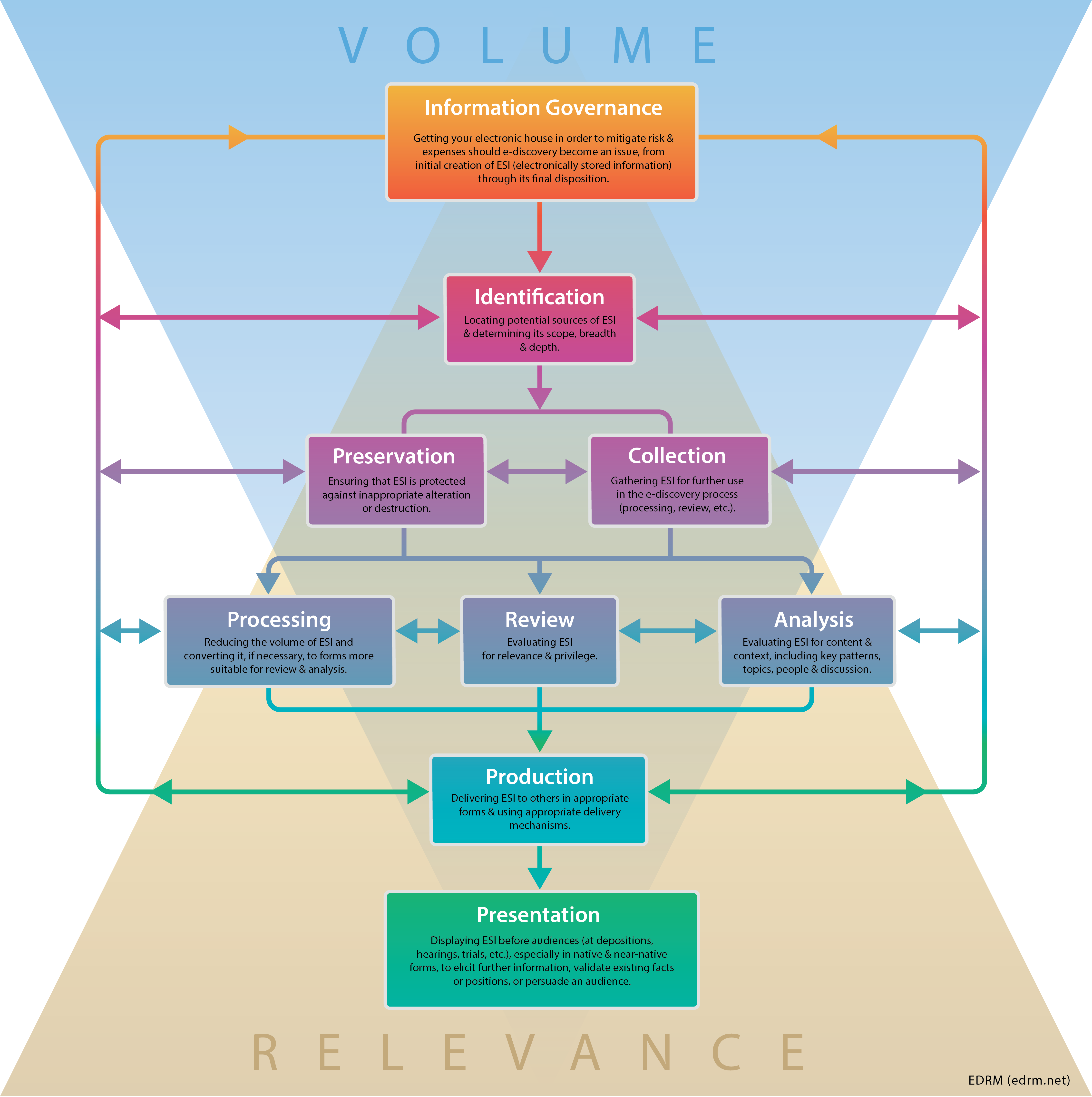Whether you are in the midst of litigation, or know that litigation is right around the corner, having a solid foundation of eDiscovery knowledge is crucial to your case. So, say you are a business owner who was just slapped with a lawsuit, and you are coming into this with no knowledge of eDiscovery. Where should you start? We’ve got you covered with the what, why, how, and who of eDiscovery.
What is eDiscovery?
eDiscovery is basically a way of categorizing a specific form of legal discovery. Discovery is a broad term for sharing any evidence, facts, or witnesses that will be involved in the pending case. This is an integral and historic part of the legal procedure — to keep a level legal playing field for both parties, with each working with the same set of information.
Increasingly, as technology works its way into more and more aspects of life, eDiscovery is becoming the primary method of discovery. Anything that is digital information is referred to as ESI, or electronically stored information. This can include:
And much, much more, down to an incredibly granular level. Is your Fitbit logging your activity for the day? It can be requested as a part of the discovery process.
Why is eDiscovery important?
It’s hard to stress how important it is for eDiscovery to be done competently and accurately for your legal issues. As mentioned, the increased use of digital networks has amplified the need for electronic discovery more than ever, and without proper handling of the data, it can be a nightmarish situation to deal with.
How does eDiscovery work?
Ahh, the nitty gritty technical swamp of eDiscovery. While there are several steps involved, it is a nonlinear and ongoing process, meaning steps are often repeated, and can involve several changes along the way depending on the direction of the case. With thousands of successful cases completed, Parcels’ experts are on hand to guide you and your legal team through this process.
- Information Governance
“Getting your electronic house in order to mitigate risk & expenses should eDiscovery become an issue, from initial creation of ESI (electronically stored information) through its final disposition.” Simply put, this is the management of electronic information, and establishes balance between both usage and security of said information.
- Identification
This is the first major point of the process — searching through your data, and identifying key documents and data points to be sifted out from the larger bulk of documents. As a party in a case, this is your opportunity to prepare and discuss the extent and limitations of eDiscovery as it relates to the case.
- Preservation & Collection
Once data has been collected, it is important that you secure the data to avoid tampering and destruction (known as “spoliation” in legal terms) by any party. Should you be the one who is holding this data, you will receive a legal hold request by the legal team instructing you to not delete those documents.
Once all of the ESI has been preserved in a defensible manner, the collection of data must be uploaded in such a way that all of the metadata is maintained in its original format, and key attributes retained.
- Processing/Review/Analysis
Processing involves taking the data collected and preparing it for review by the attorneys on the case. Using a premier eDiscovery software like Relativity, which is designed to accurately process the data, attorneys work to eliminate redundant, irrelevant or unneeded data.
Review is the key point in the whole process, where the ESI is evaluated for relevance to the case, as well as what should be counted towards attorney-client privilege. Artificial Intelligence is making inroads to eDiscovery particularly during the review process, saving both time and money for clients attorneys.
Analysis is the assessment of patterns in the ESI that could be relevant to the case. While analyzing the data should be ongoing throughout the EDRM process, it is particularly useful once more and more unneeded data has been stripped away.
- Production
Once the processes has concluded which relevant ESI pertains to the case, it must be produced as potential evidence. Communication between parties throughout the whole EDRM process will allow production to proceed more smoothly, and in fact it is mandated by Federal Rules of Civil Procedure.
- Presentation
This is the process by which it is determined how the ESI will be presented during the hearings, trials, etc. The presentation of data should be properly formatted for each case, and be prepared to be shown in front of a jury.
 EDRM (edrm.net)
EDRM (edrm.net)
Who needs to know about all this?
eDiscovery is a critical part of the process between the first indictment and standing in front of a jury. As you’d expect, this touches on a few key industries. First (and most naturally) is lawyers, who are constantly working through a swamp of information, and use it speed up the processes in a secure and easier manner. Knowing the incredibly technical ins-and-outs is no small feat, and depending on your practice size, can be overwhelming. Finding a proper vendor like here at Parcels to assist in the process is often crucial.
Similarly, companies of all sizes should be preparing in eDiscovery as a safeguard against expensive and intrusive litigation. Setting up a proper system of storing, managing, and security can make it much easier once your eDiscovery vendor comes in to assess and start building your ESI.
And while they are not directly involved in the process of information governance, collection, or preservation, judges must stay abreast of the legal ins and outs in eDiscovery, just like a doctor should stay informed to any new medical advancements. Knowing how a case was built, and what technical processes were being followed is just as important as presiding over the case.
< Return to News